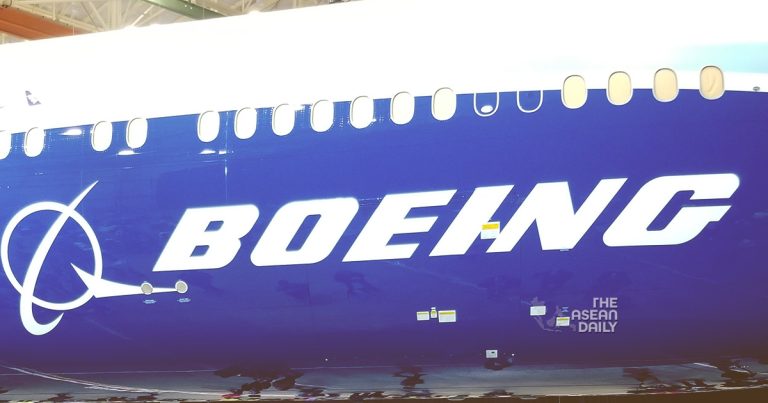10-4-2024 (WASHINGTON) The US Federal Aviation Administration (FAA) has launched an investigation into claims made by a Boeing whistleblower alleging that the plane-maker dismissed safety and quality concerns during the production of its 787 and 777 jets, an agency spokesperson confirmed on April 9.
Boeing, already grappling with a full-blown safety crisis that has undermined its reputation following a mid-air panel blowout on a 737 Max plane in January, now faces fresh scrutiny over the allegations stemming from work on its widebody 787 and 777 aircraft.
Engineer Sam Salehpour, who worked on the 787 programme, claims he faced retaliation, such as threats and exclusion from meetings, after identifying engineering problems that affected the structural integrity of the jets, according to his lawyers.
They allege that shortcuts were taken to reduce bottlenecks during the assembly of the 787 aircraft, compromising safety standards.
Boeing halted deliveries of the 787 widebody aeroplane for more than a year until August 2022 as the FAA investigated quality problems and manufacturing flaws. In 2021, Boeing admitted that some 787 aircraft had shims that were not the proper size and areas that did not meet skin-flatness specifications, which could impact the aircraft’s structural integrity and aerodynamic properties.
In a statement, Boeing expressed full confidence in the 787 Dreamliner, adding that the claims “are inaccurate and do not represent the comprehensive work Boeing has done to ensure the quality and long-term safety of the aircraft”.
Salehpour observed shortcuts used by Boeing to reduce bottlenecks during the 787 assembly process that placed “excessive stress on major airplane joints and embedded drilling debris between key joints on more than 1,000 planes”, his lawyers said.
During a call with reporters on April 9, Salehpour also claimed he witnessed misalignment issues in the production of the 777 widebody jet, which were remedied by using force. “I literally saw people jumping on the pieces of the airplane to get them to align,” he said.
Boeing’s shares closed down nearly two per cent at US$178.12 (S$239) on April 9 after the FAA confirmed the investigation, which was first reported by The New York Times.
“Voluntary reporting without fear of reprisal is a critical component in aviation safety,” the FAA said. “We strongly encourage everyone in the aviation industry to share information. We thoroughly investigate all reports.”
An agency source confirmed that the FAA has met with the whistleblower.
The Society of Professional Engineering Employees in Aerospace said Salehpour is a member who works at Boeing’s plant in Everett, Washington, but the engineering union could not comment on his specific concerns.
US Senator Richard Blumenthal’s office announced that his investigation subcommittee will hold a hearing titled “Examining Boeing’s Broken Safety Culture: Firsthand Accounts” with Salehpour on April 17.
Blumenthal expressed his desire for Boeing CEO Dave Calhoun, who announced his intention to step down by year-end in March, to testify at a future hearing.
“We want to provide Boeing the opportunity to explain to the American people why, in the light of recent apparent safety failures, the public should feel confident in Boeing’s engineering and assembly processes,” Blumenthal and Senator Ron Johnson, the top Republican on the panel, wrote.
Salehpour has provided documentation to the FAA that will be made available at the hearing, his lawyers said. In a Jan 19 letter to FAA Administrator Michael Whitaker, they stated that Salehpour made his observations while working on the 787 programme in 2021.
“Rather than heeding his warnings, Boeing prioritised getting the planes to market as quickly as possible, despite the known, well-substantiated issues he raised,” lawyers Debra Katz and Lisa Banks said in a statement on April 9.
Whitaker has taken a hard line on Boeing since the Jan 5 Alaska Air emergency, barring the plane-maker from expanding 737 Max production and requiring it to develop a comprehensive plan to address “systemic quality-control issues” within 90 days.
Separately, the US Department of Justice is investigating whether Boeing violated a 2021 settlement that shielded the company from prosecution following two fatal Max crashes in 2018 and 2019.
In August 2022, the FAA approved the first Boeing 787 Dreamliner for delivery since 2021 after the manufacturer made inspection and retrofit changes needed to meet certification standards. There are currently about 1,100 Dreamliners in service, according to Boeing.




